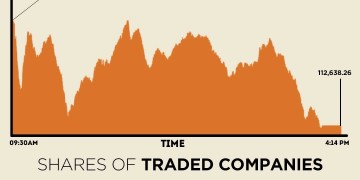By Karl Plume
CHICAGO (Reuters) – Private exporters sold 1.199 million tonnes of U.S. soybeans for shipment to China, the U.S. Agriculture Department said on Wednesday, confirming deals reported by Reuters a day earlier in the second round of buying as trade tensions ease.
Traders said on Tuesday that China, the world’s top soybean importer, returned to the U.S. soybean market after buying more than 1.5 million tonnes last week.
The sales come after U.S. President Donald Trump and China’s President Xi Jinping agreed to a 90-day trade war truce to negotiate a trade deal after meeting at the Group of 20 summit in Buenos Aires earlier this month.
The total sales to China since the meeting have not yet met expectations of grain traders and U.S. farmers, who are holding massive stockpiles of the oilseed following a record large harvest this autumn.
Chicago Board of Trade soybean futures 0#S:> gyrated on both sides of previous levels on Wednesday morning as the market weighed prospects for further soybean sales to China ahead of the early March deadline for securing a trade deal.
“This confirmation takes us up to about 3 million tonnes,” Terry Linn, analyst with Linn & Associates in Chicago, said of the total sales since the trade detente.
“Is this big enough to further upside in soybeans? Not in my opinion … The expectation coming out the Argentina meeting was 10 to 12 million tonnes,” Linn said.
The 25 percent tariff Beijing imposed on U.S. soybeans in retaliation for duties Trump put on Chinese goods remains in effect, limiting interest from private soy importers in China.
China last year imported 31.7 million tonnes of U.S. soybeans, nearly 60 percent of U.S. export shipments, in deals valued at $12.25 billion.
Fusion Media or anyone involved with Fusion Media will not accept any liability for loss or damage as a result of reliance on the information including data, quotes, charts and buy/sell signals contained within this website. Please be fully informed regarding the risks and costs associated with trading the financial markets, it is one of the riskiest investment forms possible.
Source: Investing.com



























